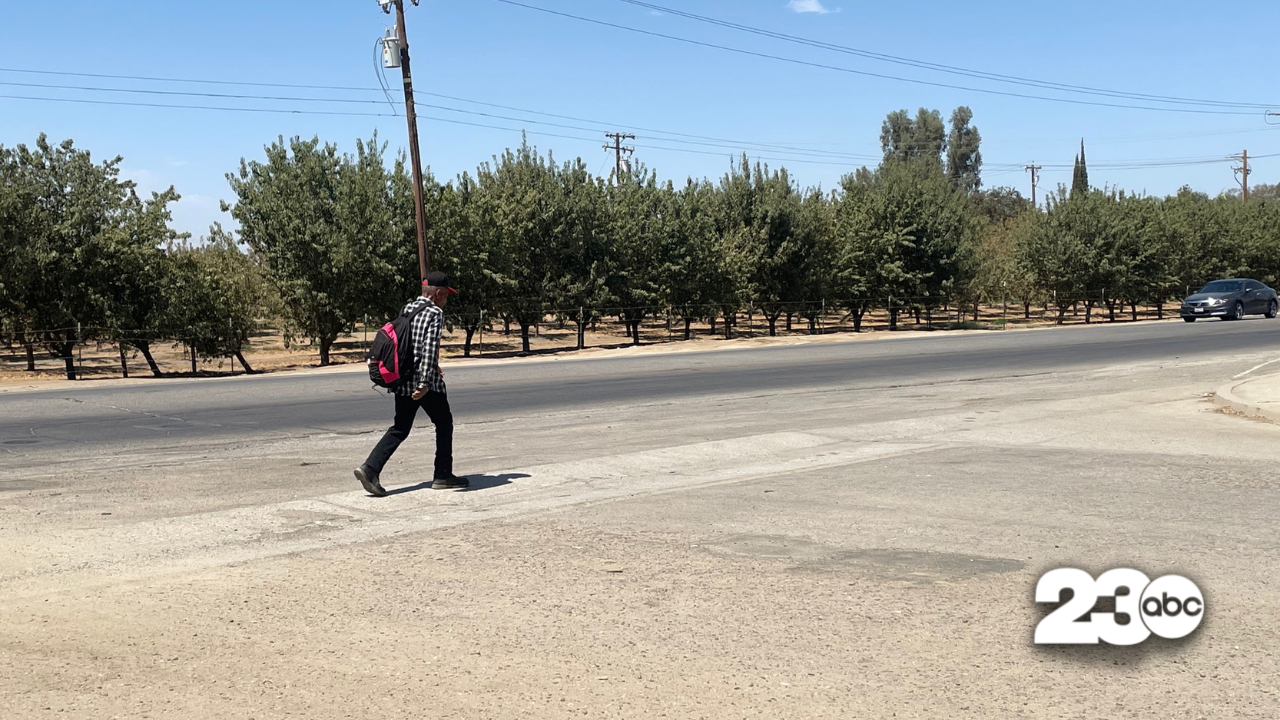ARVIN, Calif. (KERO) — Almonds are a large part of the agriculture economy in Kern County, but the snack that many enjoy also contributes to air pollution in the Central Valley.
In her more than 40 years of living in Arvin, Maria Elena Martinez says she's been through many dust storms, but never like what she saw when the almond trees were first planted near her home three years ago.
"It covers all of this. I can't even see the cars right outside because of all the dust." Martinez says the dust lasts a week at a time and there is no way to escape it. She says she has to use face masks when she has to go outside to go to work, and even if she can stay indoors, the dust seeps into her home.

Every year around this time, the almond harvest in Arvin creates so much dust that it clouds the community, and for those who live just feet from the orchards, it brings concern.
Kevin Hamilton with the Central California Asthma Collaborative explains that about six weeks before harvest, almond growers stop watering the orchards to let the fruit dry up, and the ground underneath dries up as well. That's where the dust comes from, and that dust is coming from orchards that have been treated with various chemicals.
"The issue is, dust is an irritant," says Hamilton. "So if you have a chronic respiratory disease like asthma, or COPD, or chronic bronchitis, this is going to irritate your airway."
Hamilton recommends Arvin residents and others exposed to almond orchard dust shower immediately when they get home and put their clothes in a bag to reduce how much the dust spreads in their house.
According to Hamilton, there has also been an effort to address the issue within the past couple of years, with growers considering various natural dust abatement strategies, such as planting grass in the orchards that dies in the winter and fertilizes the soil. He says, however, that introducing new plants into the area can bring botanical infections, attract pests and jeopardize the harvest.

Meanwhile, the California Almond Board knows about the situation and has funded research on additional ways growers can reduce dust. The board has set a goal to reduce dust during harvesting by 50 percent by 2025.
They sent the following statement to 23ABC:
About 90% of almond farms are family farms, many owned and operated by third or fourth generation farmers who live on their land and plan to pass it down to their children. They live in these communities, too, and plan to stay for more generations, so each of them does everything they can to protect their neighbors, as do all farmers.
The almond community is taking short- and long-term steps to reimagine how we harvest and has committed to reducing dust during harvest by 50% by 2025.
To minimize dust in the short term, the Almond Board of California is working with farmers to fine-tune harvest practices and adopt low-dust equipment that can add up to significant improvements.
The Almond Board of California and the industry has invested in a decade of research that has established practices almond farmers can use during harvest that are proven to reduce dust and encourages adoption via educational videos, technical guides, orchard workshops, equipment demonstrations and more. Every grower does they best they can, given the unique demands of their land.
Until changes are implemented, Martinez says she feels like she and her family can't catch a break. They are farmworkers, and Martinez says they are already exposed to chemicals at work. The dust from the orchards just adds to the problem. Martinez has thought about buying an air filter for her home so the air inside at least is clean, but she says the ones she's seen are too expensive.
The Valley Air Pollution Control District says studies have shown low-dust technology can reduce dangerous particulate mater by more than 40 percent and in some cases up to 80 percent. A recent study also found that a significant portion of growers are interested in adopting low -dust alternatives if they're given financial incentives. The air control district has launched a million dollar pilot programto help growers attain that goal.
For Martinez, she says the best solution would be to grow something less invasive or simply grow almonds away from Central Valley communities like Arvin.



